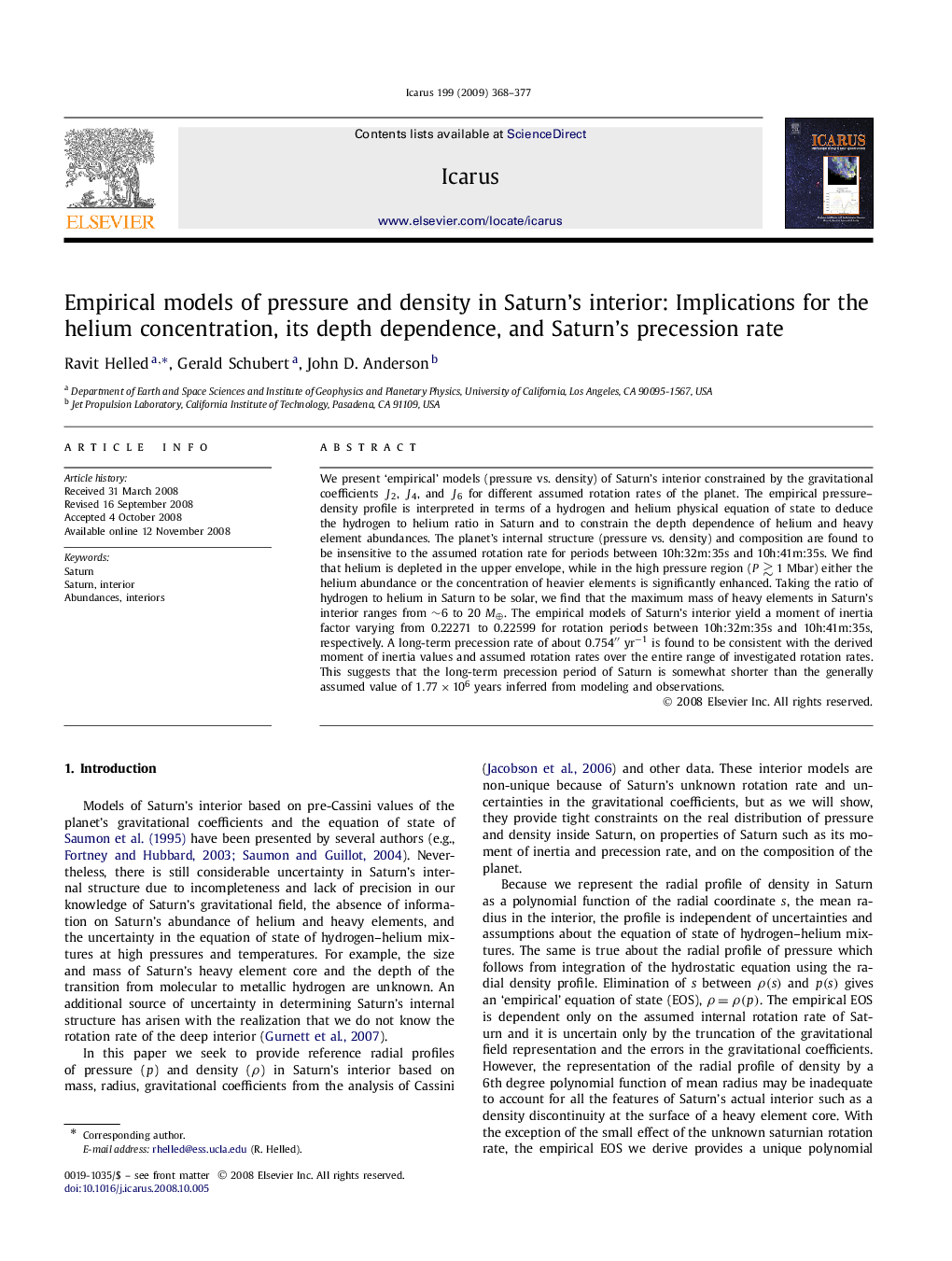| Article ID | Journal | Published Year | Pages | File Type |
|---|---|---|---|---|
| 1775538 | Icarus | 2009 | 10 Pages |
We present ‘empirical’ models (pressure vs. density) of Saturn's interior constrained by the gravitational coefficients J2J2, J4J4, and J6J6 for different assumed rotation rates of the planet. The empirical pressure–density profile is interpreted in terms of a hydrogen and helium physical equation of state to deduce the hydrogen to helium ratio in Saturn and to constrain the depth dependence of helium and heavy element abundances. The planet's internal structure (pressure vs. density) and composition are found to be insensitive to the assumed rotation rate for periods between 10h:32m:35s and 10h:41m:35s. We find that helium is depleted in the upper envelope, while in the high pressure region (P≳1 MbarP≳1 Mbar) either the helium abundance or the concentration of heavier elements is significantly enhanced. Taking the ratio of hydrogen to helium in Saturn to be solar, we find that the maximum mass of heavy elements in Saturn's interior ranges from ∼6 to 20 M⊕M⊕. The empirical models of Saturn's interior yield a moment of inertia factor varying from 0.22271 to 0.22599 for rotation periods between 10h:32m:35s and 10h:41m:35s, respectively. A long-term precession rate of about 0.754″ yr−10.754″ yr−1 is found to be consistent with the derived moment of inertia values and assumed rotation rates over the entire range of investigated rotation rates. This suggests that the long-term precession period of Saturn is somewhat shorter than the generally assumed value of 1.77×1061.77×106 years inferred from modeling and observations.
